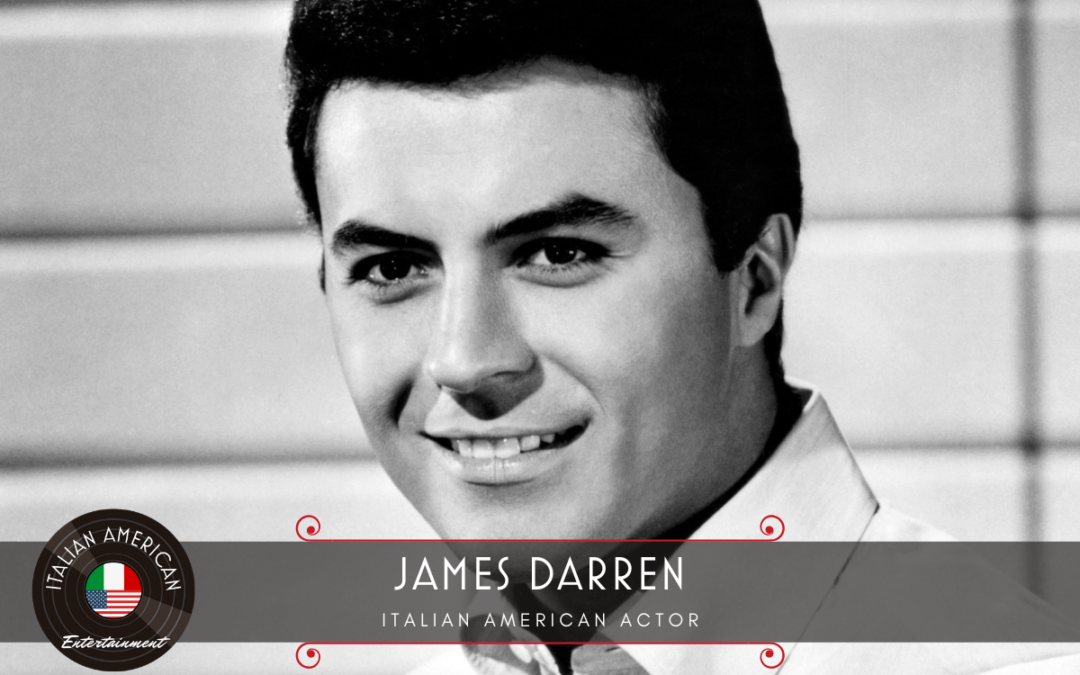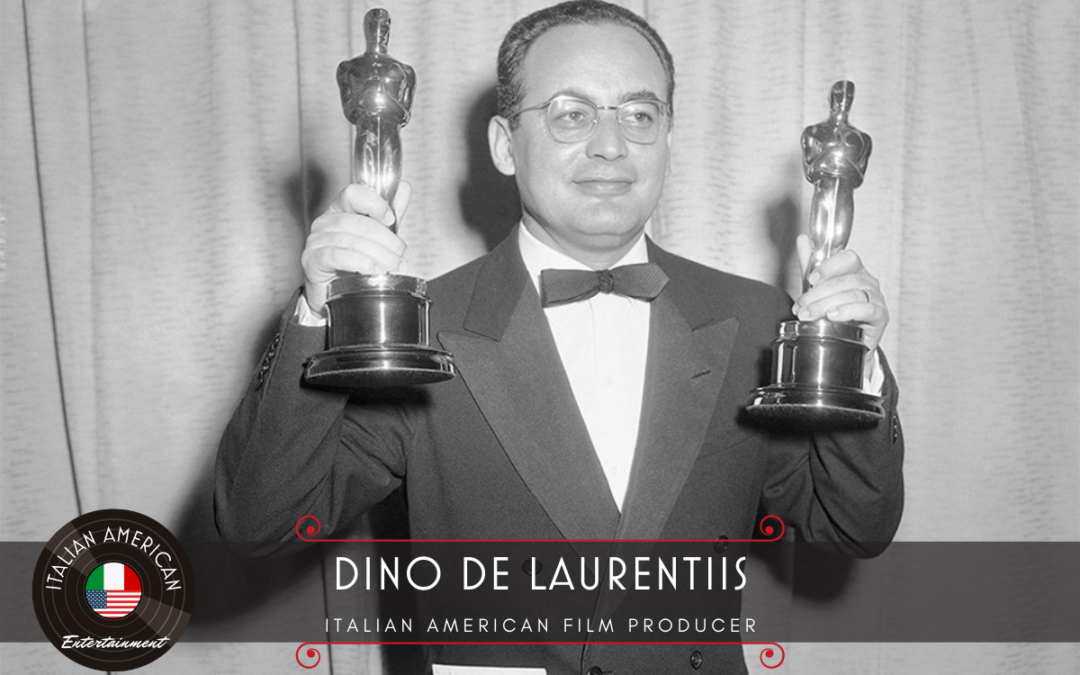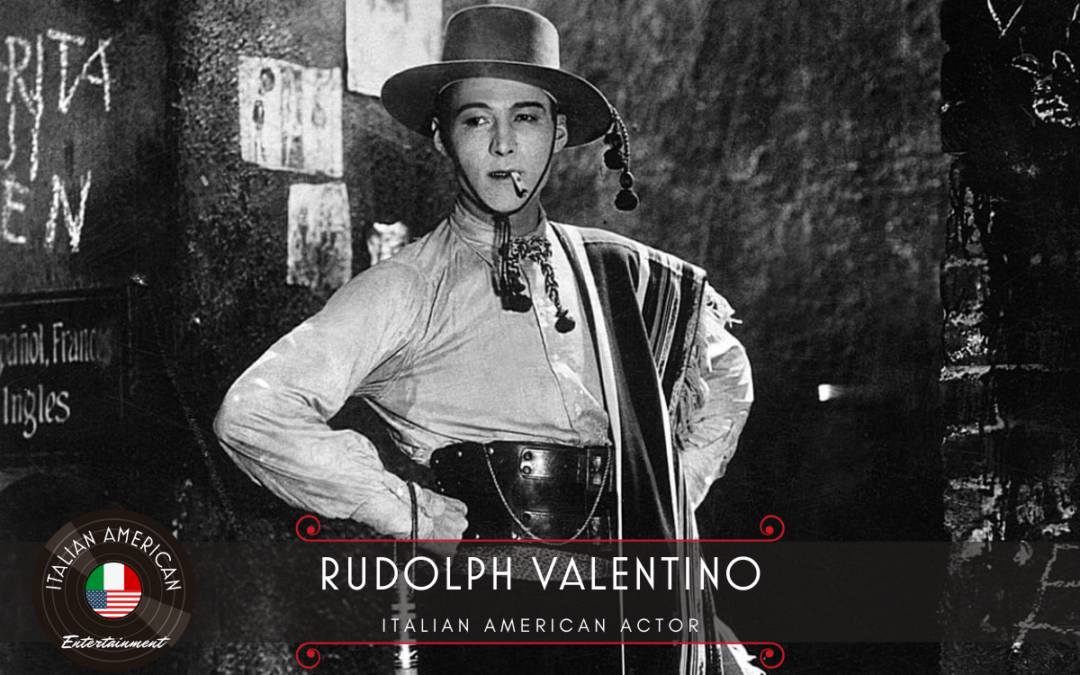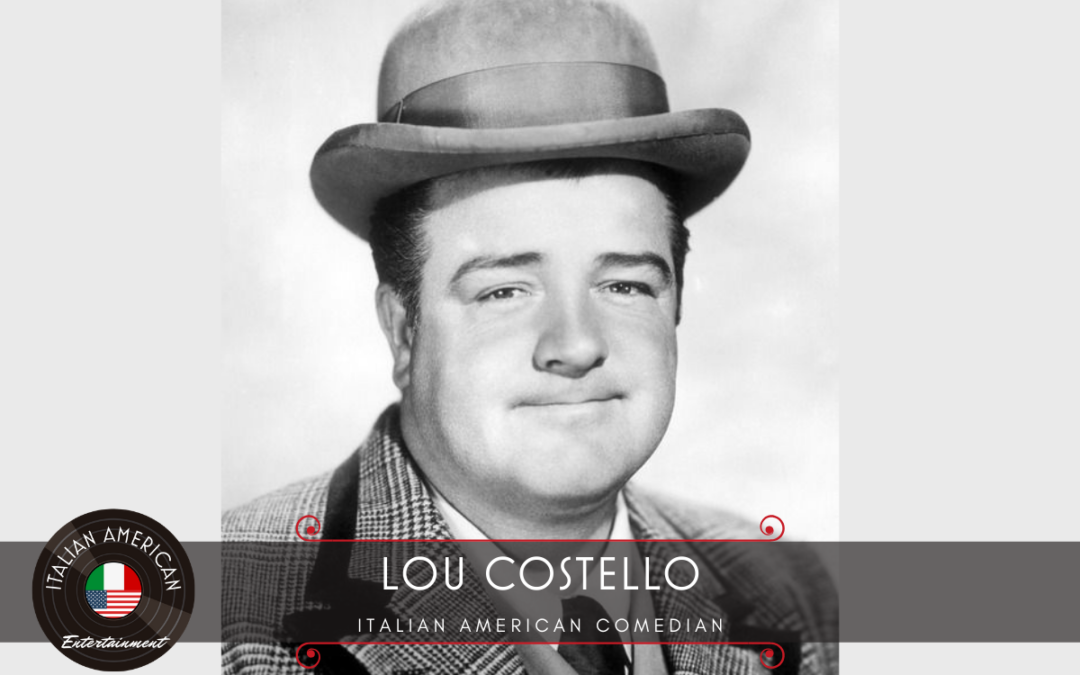
by Vince Chiarelli | Nov 18, 2020 | Blog, Film, Television
David Henry Chase was born into a working-class Italian American family in Mount Vernon, New York. His father Henry Chase, a hardware store owner, had changed his surname from “DeCesare” to “Chase” well before his son was born. He was an only child and grew up in a small garden apartment in Clifton, New Jersey, and in North Caldwell, New Jersey.
Chase started in Hollywood as a story editor for Kolchak: The Night Stalker and then produced episodes of The Rockford Files and Northern Exposure, among other series. He also worked as a writer of 19 episodes while on The Rockford Files—a show which he worked on in various capacities for more than four years. He won several Emmy awards, including one for a television movie, Off the Minnesota Strip, the story of a runaway he scripted in 1980.
Chase worked in relative anonymity before The Sopranos debuted. Chase had been fascinated by organized crime and the mafia from an early age, witnessing such people growing up. He also was raised on classic gangster films such as The Public Enemy and the crime series The Untouchables. The series is partly inspired by the Richard Boiardo family, a prominent New Jersey organized crime family when Chase was growing up, and partly on New Jersey’s DeCavalcante family. He has mentioned American playwrights Arthur Miller and Tennessee Williams as influences on the show’s writing, and Italian director Federico Fellini as an important influence on the show’s cinematic style. The series was named after high school friends of his.
Chase’s feature film debut was released on December 21, 2012. It centers on the lead singer of a teenage rock ‘n’ roll band (played by John Magaro) in 1960s New Jersey. Described as “a music-driven coming-of-age story,” the film reunites Chase with James Gandolfini (former star of Sopranos), who co-stars as Magaro’s father. Other cast members include Bella Heathcote, Christopher McDonald, Molly Price, Lisa Lampanelli, Jack Huston and Brad Garrett. Chase himself has described the film as about “a post-war, post-Depression-era parent who has given his kid every advantage that he didn’t have growing up, but now can’t help feeling jealous of the liberated, more adventurous destiny his son is able to enjoy.” Another former Sopranos cast member, Steven Van Zandt, served as music supervisor and executive producer.
After graduating from NYU in 1968, Chase moved to California and married his high school sweetheart Denise Kelly. He is the father of actress Michele DeCesare who appeared in six of The Sopranos episodes as Hunter Scangarelo.
Source

by Vince Chiarelli | Nov 9, 2020 | Blog, Film, Musicians, Television
James William Ercolani, known by his stage name James Darren, was born in Philadelphia, on June 8, 1936, of Italian descent. He wanted to be an actor and studied in New York City with Stella Adler for a number of years. Darren was discovered by talent agent and casting director Joyce Selznick after he got some photographs taken by Maurice Seymour to show potential agents: Columbia signed Darren to a long term contract in July 1956. A few weeks later he was filming his first film, Rumble on the Docks (1956), a low budget “B” movie, where Darren played the lead.
Darren guest starred on an episode of TV’s The Web (“Kill and Run”) then Columbia gave him a support role in an “A” picture, the comedy Operation Mad Ball (1957), starring Jack Lemmon. Darren was third billed in the surf film, Gidget (1959), starring Sandra Dee and Cliff Robertson, playing Moondoggie. He also sang the title track. The film was a hit with teen audiences and so was the song. Darren wound up recording a string of pop hits for Colpix Records, the biggest of which was “Goodbye Cruel World” (#3 on the Billboard Hot 100 in 1961). It sold over one million copies, and was awarded a gold disc. Another sizeable hit was “Her Royal Majesty” (#6 on the Billboard Hot 100 in 1962).
Darren was featured in many other films and tv shows throughout the decades.
Source

by Vince Chiarelli | Nov 6, 2020 | Blog, Film
Agostino “Dino” De Laurentiis was born in 1919 in Torre Annunziata in the province of Naples, and grew up selling spaghetti made by his father’s pasta factory. He started his studies at the Centro Sperimentale di Cinematografia in Rome in the years 1937–1938 then interrupted by the outbreak of the Second World War.
Following his first film, L’ultimo Combattimento (1940), Laurentiis produced nearly 150 films during the next seven decades. In 1946 his company, the Dino de Laurentiis Cinematografica, moved into production. In the early years, De Laurentiis produced Italian neorealist films such as Bitter Rice (1949) and the Fellini classics La Strada (1954) and Nights of Cabiria (1956), often in collaboration with producer Carlo Ponti.
De Laurentiis relocated to the US in 1976, and became an American citizen in 1986. In the 1980s he had his own studio, De Laurentiis Entertainment Group (DEG), based in Wilmington, North Carolina. The building of the studio made Wilmington a center of film and television production. In 1990, De Laurentiis obtained backing from an Italian friend and formed another company, Dino De Laurentiis Communications in Beverly Hills.
De Laurentiis made a number of successful and/or acclaimed films, including Serpico (1973), Death Wish (1974), Mandingo (1975), Ragtime (1981), Conan the Barbarian (1982), Blue Velvet (1986) and Breakdown (1997). De Laurentiis’ name became well known through the 1976 King Kong remake, which was a commercial hit; Orca (1977), a killer whale film; The White Buffalo (1977), a western; the disaster movie Hurricane (1979); the remake of Flash Gordon (1980); and King Kong Lives (1986). De Laurentiis also produced several adaptations of Stephen King works, including The Dead Zone (1983), Cat’s Eye (1985), Silver Bullet (1985), and Maximum Overdrive (1986).
In the 1980s, de Laurentiis owned and operated DDL Foodshow, a specialty retailer with two gourmet Italian markets in New York City and Los Angeles. DDL Food Show was an Italian specialty foods store with three locations, two in New York City and one in Beverly Hills in Los Angeles. They were opened in the early 1980s and owned and operated by De Laurentiis. DDL Foodshow was later considered to be a forebear of the new Italian specialty goods food-store restaurant dining attraction Eataly.
In 1949, De Laurentiis married actress Silvana Mangano, with whom he had four children: Veronica; Raffaella, who is also a film producer; Federico, another producer who died in a plane crash in 1981; and Francesca. De Laurentiis and Mangano divorced in 1988. In 1990, he married Martha Schumacher, who produced many of his films since 1985, and with whom he had two daughters, Carolyna and Dina. One of his grandchildren is Giada De Laurentiis, host of Everyday Italian, Behind the Bash, Giada at Home, and Giada’s Weekend Getaways on Food Network.
De Laurentiis died on November 10th, 2010 at his residence in Beverly Hills at the age of 91.
Source

by Vince Chiarelli | Nov 4, 2020 | Blog, Film
Rudolph Valentino, (Rodolfo Alfonso Raffaello Pierre Filibert Guglielmi di Valentina d’Antonguolla), was an Italian-born American actor who was idolized as the “Great Lover” of the 1920s.
When Rudolph was 11, his father, a veterinarian, died from malaria. After being rejected for military service, reportedly because he was too frail, he studied agricultural science. In 1913 Guglielmi immigrated to the United States and settled in New York City, where he worked as a gardener and as a dishwasher. The following year he made his first films, appearing in uncredited roles. About this time he was hired by the nightclub Maxim’s to serve as a dance partner for female patrons, and the work exposed him to high society. He reportedly was hired by Blanca de Saulles, a Chilean heiress, to work as a gardener, and he testified at her divorce hearing, claiming that her husband, John de Saulles, had committed adultery. John later had Rudolph arrested on dubious “vice” charges, and in 1917 Blanca killed her husband. Worried that he would be caught in the ensuing scandal, Guglielmi left New York City with a musical troupe.
In 1918 Guglielmi settled in Los Angeles, where he focused on acting and eventually chose the stage name Rudolph Valentino. After playing various small parts, he was cast as Julio in The Four Horsemen of the Apocalypse (1921). The war drama became known for a tango scene featuring Valentino and Beatrice Dominguez, and it made him a star, with his popularity being managed by skillful Hollywood press agents. Valentino then appeared in a series of romantic dramas, notably The Sheik (1921), Blood and Sand (1922), and The Eagle (1925).
Many of these films were noted for extravagant costumes and heavy makeup, and all highlighted Valentino’s exotic—if at times sexually ambiguous—good looks. However, his detractors—most of whom were men—questioned his masculinity, and one columnist claimed that Valentino was responsible for the United States’ “degeneration into effeminacy.” While such comments angered the actor, they had little impact on his popularity. In fact, his fame was such that a bigamy scandal—he married (1922) set designer and costumer Natasha (also spelled Natacha) Rambova before his divorce to Acker was finalized—only seemed to enhance his romantic image. Valentino’s marriage to Rambova was annulled, and they wed again in 1923. However, the union was tumultuous. Rambova was accused of being controlling, and she was largely blamed for Valentino’s appearance in several poorly received films, notably Monsieur Beaucaire and A Sainted Devil (both 1924). She was eventually banned from his sets, and they divorced in 1925. The following year he starred in what was arguably his most popular film, The Son of the Sheik, earning particular praise for his performance. It was Valentino’s final movie and cemented his status as a legendary heartthrob.
Shortly after the premiere of The Son of the Sheik, the 31-year-old Valentino died suddenly from peritonitis after he suffered a ruptured ulcer. His death caused worldwide hysteria, several suicides, and riots at his lying in state, which attracted a crowd that stretched for 11 blocks. Reportedly, more than 80,000 fans attended his funeral. Each year after his death a mysterious “Woman in Black,” sometimes several “Women in Black,” appeared at his tomb.
Source

by Vince Chiarelli | Nov 2, 2020 | Blog, Comedy, Film, Television
Daniel Louis Castellaneta was born in 1957 at Roseland Community Hospital on Chicago’s south side and was raised in River Forest and Oak Park, Illinois. He is of Italian descent, born to Elsie Lagorio and Louis Castellaneta.
Castellaneta became adept at impressions at a young age and his mother enrolled him in an acting class when he was sixteen years old. He would listen to his father’s comedy records and do impressions of the artists. Upon graduating high school, he started attending Northern Illinois University (NIU) in the fall of 1975.
Castellaneta studied art education, with the goal of becoming an art teacher. He became a student teacher and would entertain his students with his impressions. Castellaneta started acting after his graduation from Northern Illinois University in 1979. He began taking improvisation classes, where he met his future wife Deb Lacusta. He started to work at The Second City, an improvisational theatre in Chicago, in 1983 and continued to work there until 1987. During this period, he did voice-over work with his wife for various radio stations.
He auditioned for a role in The Tracey Ullman Show and his first meeting underwhelmed Tracey Ullman and the other producers. Ullman decided to fly to Chicago to watch Castellaneta perform. His performance that night was about a blind man who tries to become a comedian and Ullman later recalled that although there were flashier performances that night, Castellaneta made her cry. She was impressed and Castellaneta was hired.
Castellaneta is most famous for his role as Homer Simpson on the longest running American animated television show The Simpsons. The Tracey Ullman Show included a series of animated shorts about a dysfunctional family. Voices were needed for the shorts, so the producers decided to ask Castellaneta and fellow cast member Julie Kavner to voice Homer and Marge Simpson respectively, rather than hire more actors. Homer’s voice began as a loose impression of Walter Matthau, but Castellaneta could not “get enough power behind that voice” and could not sustain his Matthau impression for the nine- to ten-hour long recording sessions.
He tried to find something easier, so he “dropped the voice down”, and developed it into a more versatile and humorous voice during the second and third season of the half-hour show. Castellaneta’s normal speaking voice has no similarity to Homer’s. To perform Homer’s voice, Castellaneta lowers his chin to his chest, and is said to “let his IQ go.”
Castellaneta also provides the voices for numerous other characters, including Grampa Simpson, Barney Gumble, Krusty the Clown, Groundskeeper Willie, Mayor Quimby, Hans Moleman, Sideshow Mel, Itchy, Kodos, Arnie Pye, the Squeaky Voiced Teen and Gil Gunderson.
Castellaneta has won several awards for voicing Homer, including four Primetime Emmy Awards for “Outstanding Voice-Over Performance”. In 1993, Castellaneta was given a special Annie Award, “Outstanding Individual Achievement in the Field of Animation”, for his work as Homer on The Simpsons.
Source: WIKI

by Vince Chiarelli | Oct 31, 2020 | Blog, Comedy, Film, Television
Italian American comedian Louis Francis Cristillo was born on March 6, 1906, in Paterson, New Jersey. Growing up, Lou was a gifted athlete and played a number of sports in high school, but his main pasion was acting. Lou grew up admiring silent films and actors, especially the work of Charlie Chaplin. When he was 21, he moved to Hollywood and began to work as a stuntman where he adopted the professional name “Costello” after famed silent film actress Helene Costello. His career was short lived as he sustained an injury that prevented him from continuing to work as a stunt person. Lou decided to move to New York City and joined the vaudeville circuit performing as a comedian.
It was on one of those circuits that Lou met a fellow comedian named Bud Abbott. The two joined forces and changed the face of comedy forever. The comedy team’s career began to take off in 1942 with their radio program The Abbott and Costello Show. They made the move to film and television and continued to perform in over 50 television episodes and 36 films. In 1956, the two decided to end their work relationship. Lou hoped to broaden his film roles and worked in more dramatic projects. On March 3, 1959, he passed away from a heart attack. Lou Costello’s comedic style lives on today with adults and children alike debating who, exactly, is on first.
SOURCES: ABBOTT & COSTELLO FAN CLUB, BIOGRAPHY.COM, ENCYCLOPÆDIA BRITANNICA, OSIA






